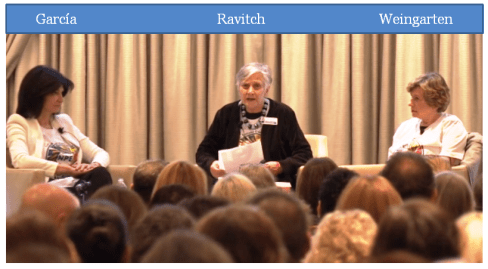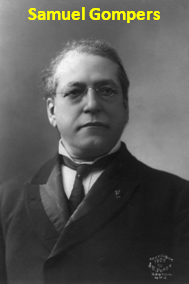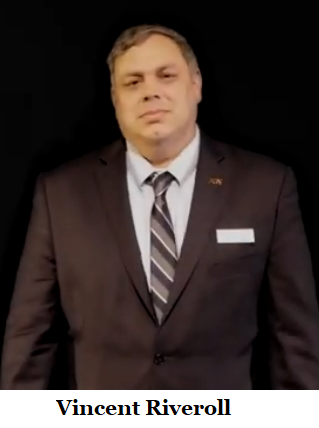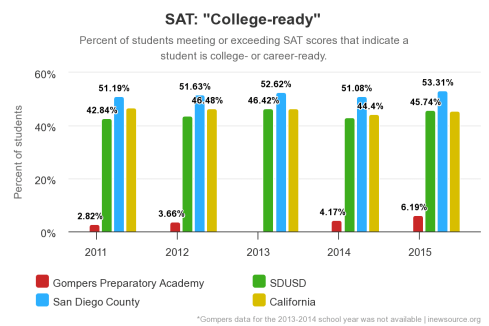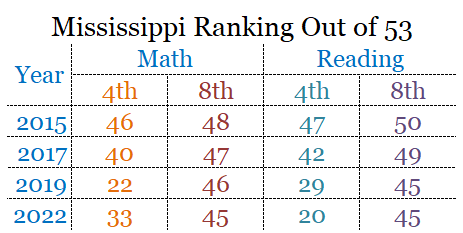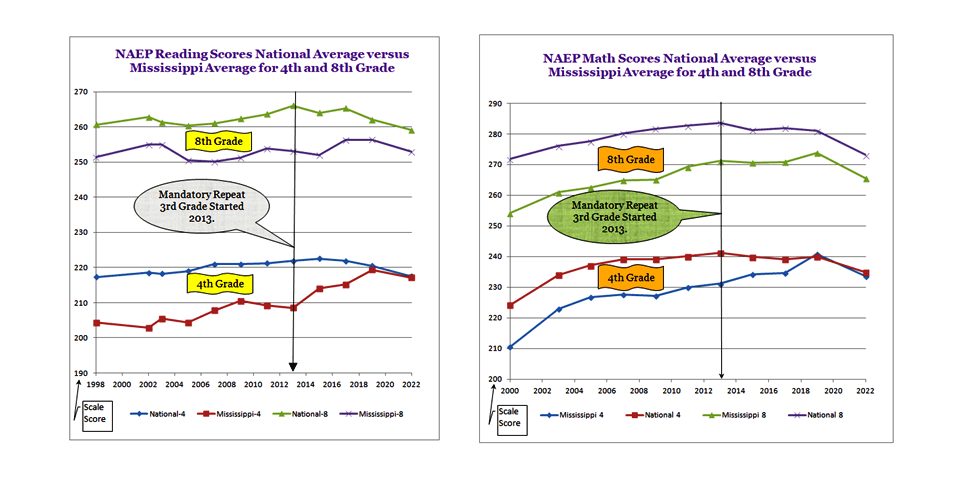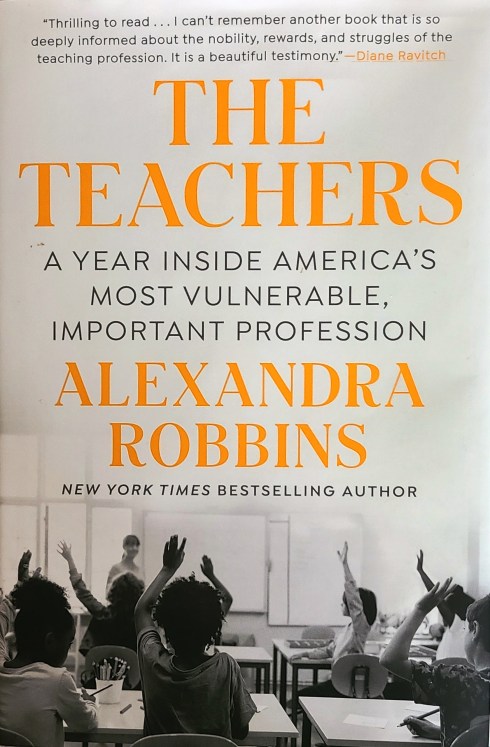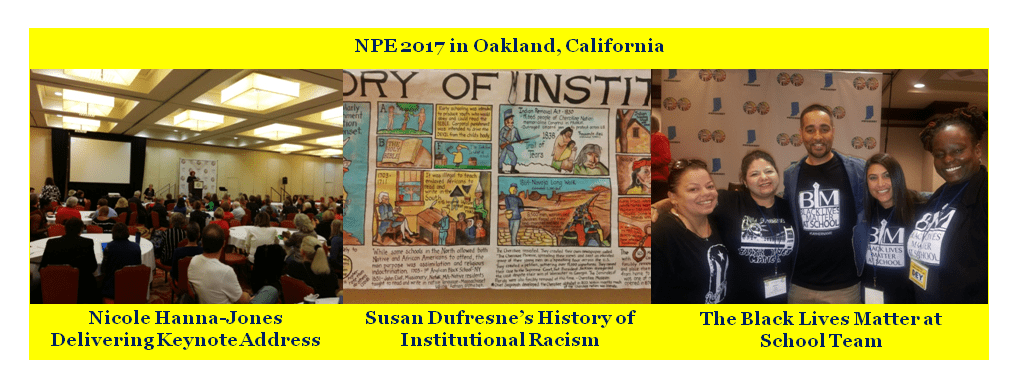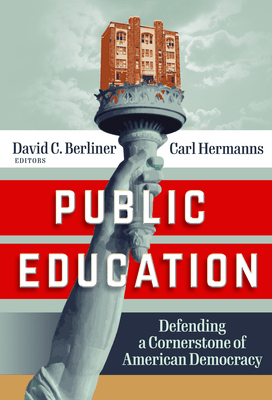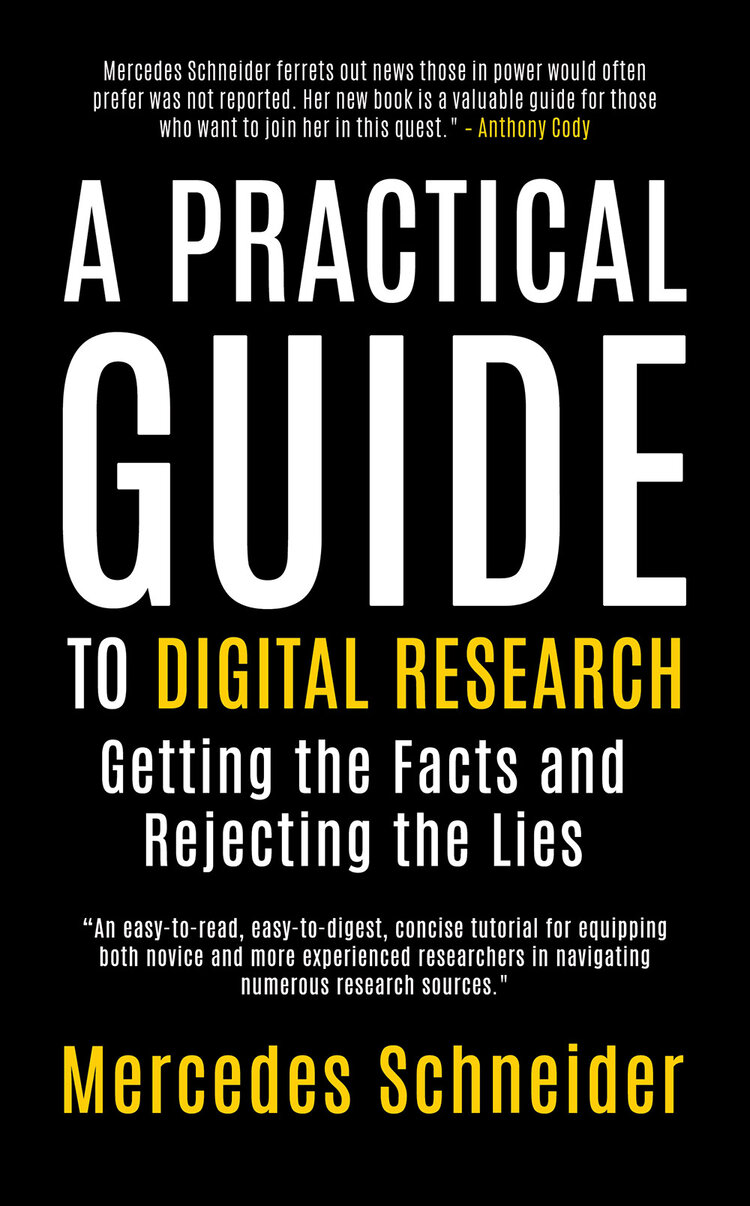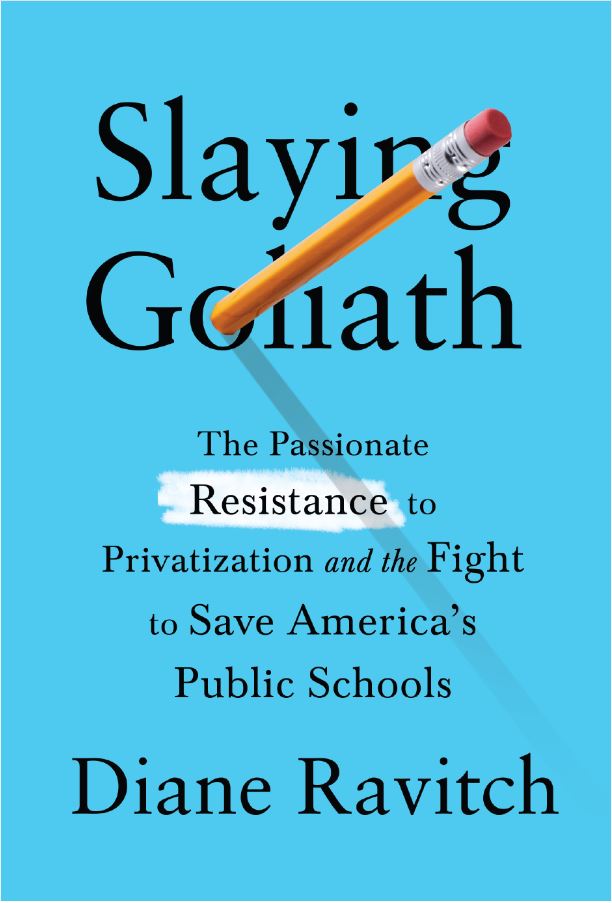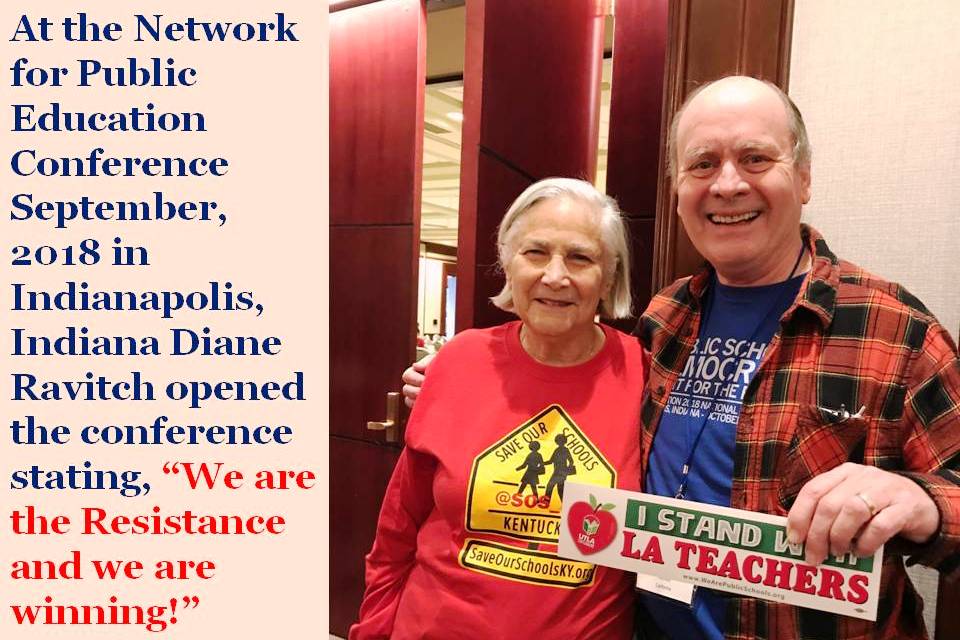By T. Ultican 5/27/2019
Maybe not as witty and wise as I had hoped but definitely positive and impressed. I admit; I am a Diane Ravitch fan-boy and this latest release from Garn Press reinforces that posture. Diane is a warrior of ideas who has stood courageously against lavishly financed purveyors of reactionary ideologies. Billionaires are calling for the privatization of democratically run public schools in America and she won’t have it. This book is a compilation of a decade of her winning arguments that have gone far toward stemming the tide of the theft of America’s public schools. Billionaires call that “reform”.
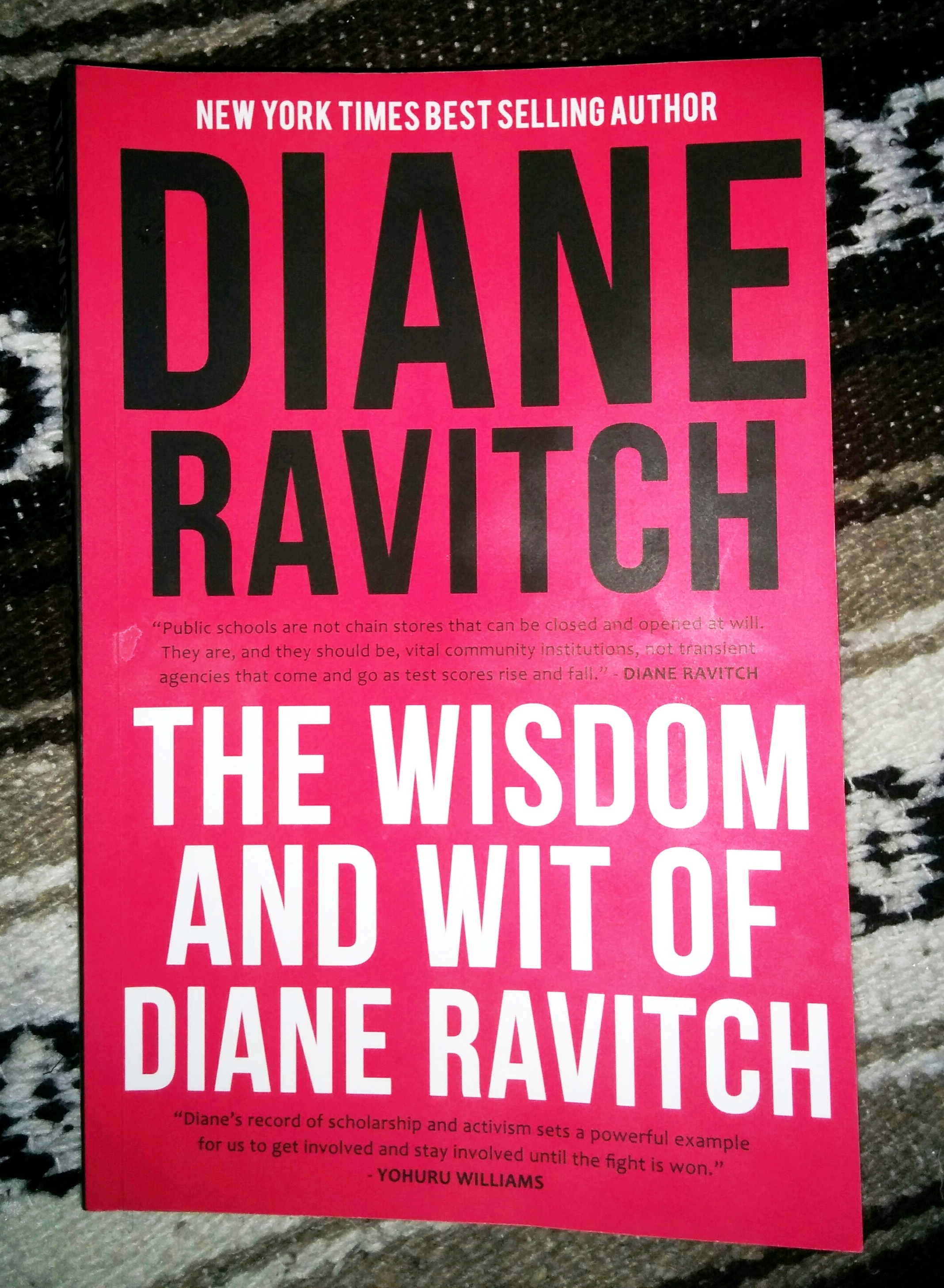
The Fundamental Argument
America’s super-wealthy espouse a position echoing the antebellum south. The scholar Johann N. Neem’s book Democracy’s Schools; The Rise of Public Education in America notes, “Because of their political power and the way the tax burden fell largely upon them, slaveholding elites spread an antitax gospel to convince ordinary whites that taxes were a bad thing.” That same gospel is embedded in the Tea Party and other Libertarian movements.
Franklin Roosevelt became President at the height of the Great Depression. In 1935, Roosevelt signed the Old-Age, Survivors, and Disability Insurance law more commonly known as Social Security. In 1965 President Lyndon Johnson signed the Medicare extension. In the Social Security administration’s history of Social Security it describes the major challenges to the free market capitalistic system that Roosevelt faced. It claims Social Security Insurance was the least disruptive alternative available to him. The history states,
Social insurance, as conceived by President Roosevelt, would address the permanent problem of economic security for the elderly by creating a work-related, contributory system in which workers would provide for their own future economic security through taxes paid while employed. Thus it was an alternative both to reliance on welfare and to radical changes in our capitalist system. In the context of its time, it can be seen as a moderately conservative, yet activist, response to the challenges of the Depression. (emphasis added)

1936 Photo by Dorothea Lange
Austrian Economist Friedrich Hayek who believed in classical liberalism especially the concept that it is in the common interest that all individuals must be able to secure their own economic self-interest, without government direction. In September 1944, the University of Chicago Press published Hayek’s book The Road to Serfdom. It was squarely against government programs like social security and Roosevelt’s “new deal.” Hayek was opposed to Keynesian economics which posited “that government intervention can stabilize the economy.”
In 1950, Hayek left the London School of Economics for the University of Chicago. It was there that Milton Friedman and a host of young scholars met their sole mate, Hayek. They saw government social programs as seeds for tyranny and public education was no exception.
Ravitch picks up this story in the article “Big Money Rules.” The article begins with a quote from her blog,
“Americans for Prosperity opposes all government programs. Its primary purpose is to protect the Koch billions from taxation to pay for any programs that benefit others. If it was up to the Koch Brothers, they would eliminate Social Security, Medicare, and every other social program. They are rabid libertarians who oppose taxation and government. Their interest is protecting the Koch billions, not anyone else.”
She uses data from two books, Democracy in Chains: The Deep History of the Radical Right’s Stealth Plan for America by Nancy MacLean and Gordon Lafer’s The One Percent Solution: How Corporations Are Remaking America One State at a Time.
MacLean’s book tells the story of economist James M. Buchanan who is associated with the doctrine of economic libertarianism and the “public choice” model of economics. His basic argument is that bureaucrats and public officials serve their own interests. MacLean viewed Buchanan as having “a formative role” in establishing the anti-democratic “stand of the radical right.”
While researching, MacLean discovered personal correspondence between Buchanan and the billionaire Republican donor Charles Koch. She found a plan “to train a new generation of thinkers to push back against Brown v. Board of Education and the changes in constitutional thought and federal policy that had enabled it.”
Until the 1980 election of Ronald Reagan, far right economists like Hayek, Friedman and Buchanan, were viewed as part of a small fringe minority. Three of Buchanan’s first doctoral students went to work in Reagan’s administration. Buchanan and his acolytes were responding to the threats democratic institutions posed to the preservation of individual wealth.
Attacking Social Security was a big part of their agenda. Buchanan declared that Social Security was a “Ponzi scheme.” In a paper for the Cato Institute he explained if “people can be led to think that they personally have no legitimate claim against the system on retirement” it will “make abandonment of the system look more attractive.” Ravitch observed, “The genius of their strategy was in describing their efforts to change government programs as ‘reforms,’ when in fact they were intended from the outset to result in their destruction.”
Gordon Lafer’s book documents the efforts of the American Legislative Exchange Council (ALEC) to advance the Koch-Buchanan agenda. Ravitch writes, “In the first decade of this century, ALEC’s leading corporate backers contributed more than $370 million to state elections, and over one hundred laws each year based on ALEC’s model bills were enacted.” Lafer stated, “For the first time ever in 2012 more than half of all income in America went to the richest 10 percent of the population.”
Public education is a significant target of the super wealthy. During the first almost two decades of the twenty-first century billionaires like David and Charles Koch (Koch Industries), Bill Gates (Microsoft), the Walton family (Walmart), the DeVos family (Amway), Eli Broad (KB Homes and Sun America), John Arnold (Enron), Reed Hastings (Netflix), Doris Fisher (The Gap), Michael Dell (Dell Computers) and others have savaged public schools while labeling themselves “reformers.” Ravitch counters, “It is perfectly clear that they have no desire to “reform” our public schools but to privatize and monetize them.”
Ravitch goes on to state,
“I have nothing against the wealthy. I don’t care that some people have more worldly goods than others. I understand that life’s not fair. I just harbor this feeling that a person ought to be able to get by on $100 million or so and not keep piling up riches while so many others don’t know how they will feed their children tonight.”
Battling the Wealthy and Their Talking Points with Reason and Knowledge
When I came to education in 2001, like most Americans, I was convinced that public education was in decline and that the teaching corps was poor quality and lazy. I had heard a little about a “Nation at Risk” and George Bush’s goals 2000. I remember Bill Clinton pushing charter schools and standards. I heard that the failing school system in Milwaukee was going to allow children to attend private voucher schools. But like most people, I only had a vague conception of the reality of public education and having grown up with a school teacher mom, I still believed in public education.
By 2005, I was convinced that most of what I previously thought about education was wrong. I quickly learned that almost all of the experienced teachers I met were way better than me and really cared about their students, their schools and their profession. In graduate school, I discovered that the Reagan administration’s “A Nation at Risk” was not a peer reviewed professional article of the kind that normally came from government offices. Rather it was a polemic filled with errors promoting a particular agenda of standards and accountability.
In 2010, when I read Diane Ravitch’s “The Death and Life of the Great American School System; How Testing and Choice Are Undermining Education, I was thrilled. A powerful voice was speaking up for public education and against the propagandistic attack. However, the veteran teacher in the classroom next door was underwhelmed. Unlike me, he had been teaching and paying close attention to education politics since 1978. He knew Ravitch as a conservative purveyor of top down standards and testing.
Ravitch admits that my colleague was right. She writes,
“By the time I left government service in January 1993, I was an advocate not only for standards but for school choice. I had come to believe that standards and choice could co-exist as they do in the private sector. With my friends Chester Finn Jr. and Joseph Viteritti, I wrote and edited books and articles making the case for charter schools and accountability.”
When Death and Life was published, Ravitch had become completely disenchanted by what she started referring to as “Corporate Education Reform.” She saw hundreds of millions invested in test-preparation while arts, science, history, literature, geography, civics, foreign language and physical education became the sad stepchildren of the tested math and English. She says, “Accountability turned into a nightmare for American schools, producing graduates who were drilled regularly on the basic skills but were often ignorant about almost everything else.”
At the same time, she started to see how destructive of public education – especially to neighborhood schools – the choice movement had become. And worse yet, choice schools had eschewed innovation in pursuit of profits. Ravitch began refuting the conservative agenda. The Wisdom and Wit of Diane Ravitch is a compilation of those arguments.
American Students Don’t Test Well
Americans have never done well on international testing. Ravitch highlights Yong Zhao’s book, Who’s Afraid of the Big Bad Dragon? Why China Has the Best (and Worst) Education System in the World. Zhao says East Asian nations have top scores because of their heavy test preparations. Ravitch reports,
“Our students have never had high scores on international tests, not since the first international test of math was administered in 1964, and our seniors scored last among 12 nations. We went on over the half-century since then to out compete the other 11 nations who had higher test scores.”
She argues that standardized testing identifies poverty; not teaching. Ravitch points out the obvious, “No nation in the world has eliminated poverty by firing teachers or by handing its public schools over to private managers, nor does research support either strategy.” She pithily says, “When it comes to child poverty, we are number 1.”
US Rankings reported in Wit and Wisdom:
- Quality Pre-school #24
- Good Pre-natal care #131
- Industrial Nations Child Poverty #1
George Bush, George Miller and Ted Kennedy gave us the No Child Left Behind law. Barack Obama and Arne Duncan gave us the Race to the Top law. Both laws employed the same test based accountability and punish strategies. Ravitch notes we are nowhere near whatever the top is supposed to be and the same children who were left behind in 2001-2 are still being left behind. In 2014, she declared, “Now that we have endured more than a dozen long years of No Child Left Behind and five fruitless, punitive years of Race to the Top, it is clear that they both failed.”
Democrats Embraced the Conservative Agenda
When Betsy DeVos was confirmed as Secretary of Education, Democrats were outraged. Michael Bennet who introduced the portfolio model of education management into Denver’s schools and Corey Booker who tried to charterize all of the schools in Newark, New Jersey spoke passionately against the appointment. Ravitch pointed out, “But the resistance of DeVos obscured an inconvenient truth – Democrats have been promoting a conservative ‘school reform’ agenda for the past three decades.” She also wrote,
“Democratic charter advocates – whose ranks include the outraged Booker and Bennet – have increasingly imported ‘school choice’ into the party’s rhetoric. Booker likes to equate ‘choice’ with ‘freedom’ – even though the entire idea of ‘choice’ was created by white Southerners who were scrambling to defend segregated schools after Brown v. Board of Education.”
“As Democrats learned years ago, support for mandatory testing and charter schools opens fat wallets on Wall Street. Money guys love deregulation, testing and Big Data, and union busting. In 2005, Obama served as the featured speaker at the inaugural gathering of Democrats for Education Reform, which bundles contributions to Democrats who back charter schools.”
Ravitch says that evidenced-based Democrats ought to acknowledge that school choice doesn’t work. Charter schools are a failed experiment that increase segregation and do not increase performance. Students in vouchers schools lose ground compared to their peers in public school.
As Ravitch continued to attack “school reform” nonsense, she also used her blog to elevate the voices of others. Ravitch and friends have dominated social media for a decade. At the Network for Public Education conference in Indiana this October she could boldly open the proceedings with, “We are the resistance and we are winning!”
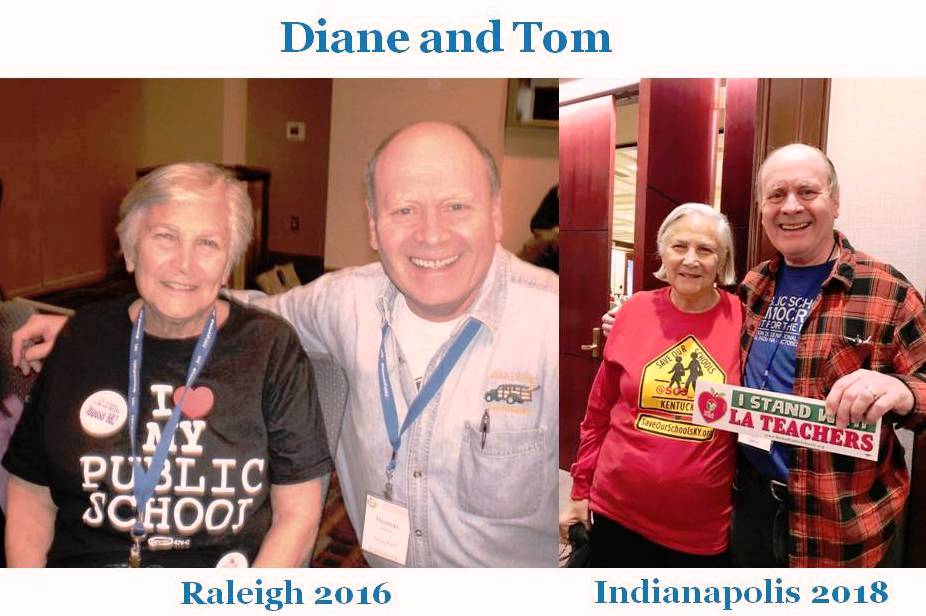
Ravitch States the Elements of Good Education
“Every school should be staffed with credentialed and well qualified teachers. Class sizes should be no larger than 20 in elementary schools, no larger than 24 in middle and high schools. Every school should offer a full curriculum, including the arts, civics, history and foreign languages. Every school should have a library and media center staffed by a qualified librarian. Every school should have fully equipped laboratories for science. Every school should have a nurse and a social worker. Every school should be in tip-top physical condition.”
Wisdom and Wit recounts the arguments about education for the past 20 years. In an open letter to her old boss at the Department of Education, Lamar Alexander, she wrote,
“In closing, may I remind you of something you wrote in your book of advice?
“No. 84: Read anything Diane Ravitch writes about education.”
That seems like excellent advice. Her next book, Slaying Goliath, comes out in January.
Tags: Charter schools, Diane Ravitch, education, Education Reform, Gates, John Arnold, Reed Hastings, testing, Walton Foundation



